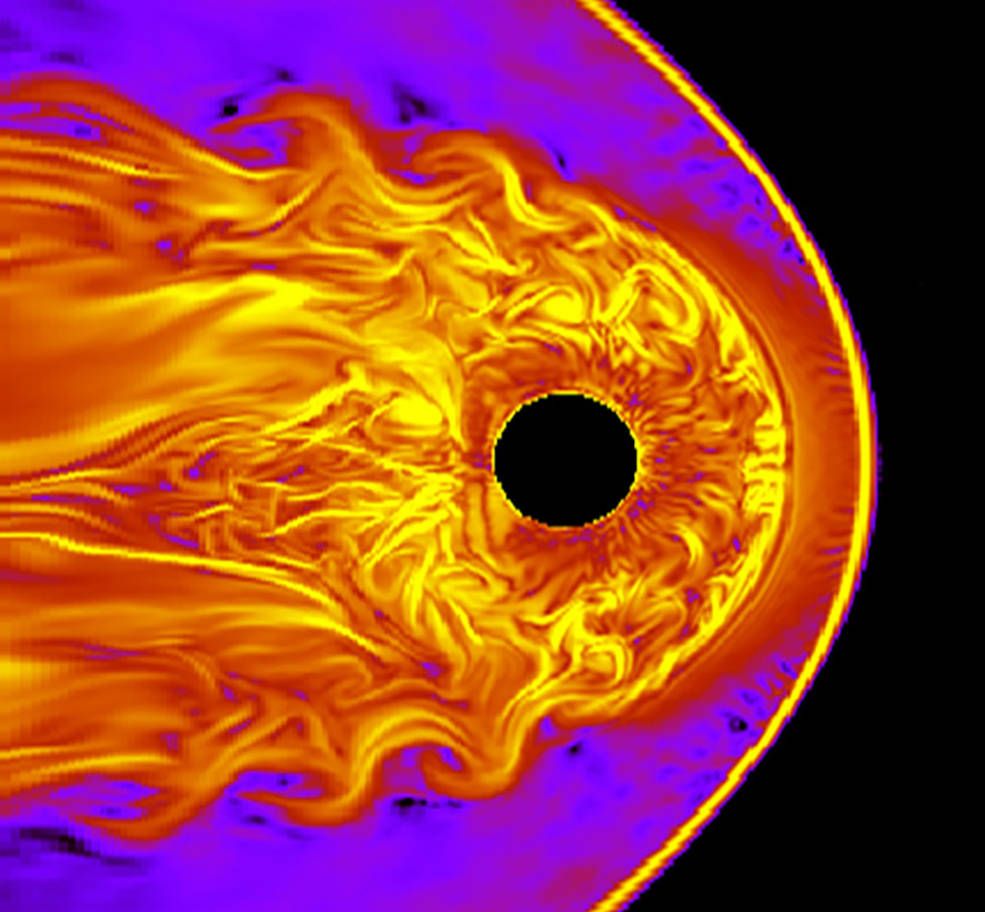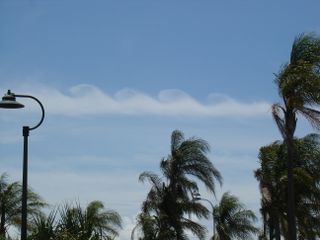'Surfer's Waves' Found in Space

Surf's up — way, way up.
Researchers have discovered a breaking-wave pattern over the magnetosphere, the magnetic field that surrounds Earth. As seen in a new NASA image, these waves look similar to the ocean waves that surfers crave. Their presence, though, might influence the "space weather" that causes auroras and can disrupt telecommunications and power girds.
Waves caused by a fast-moving fluid traveling over a slow-moving fluid are called Kelvin-Helmholtz waves. They're seen in the ocean, in clouds and even on the sun, according to NASA's Goddard Space Flight Center. They've also been detected at the edge of the magnetosphere, where charged particles from the sun clash with the planet's magnetic field.
But scientists thought these waves breaking on the magnetosphere were rare — and that's not the case, said Shiva Kavosi, a space scientist at the University of New Hampshire and co-author of a new study of the phenomenon published May 11 in the journal Nature Communications.

"It turns out they can appear under any conditions and are much more prevalent than we thought," Kavosi said in the NASA Goddard statement. "They're present 20 percent of the time."
Kavosi and colleagues used data from NASA's Advanced Composition Explorer (ACE) and Time History of Events and Macroscale Interactions During Substorms (THEMIS) spacecraft. THEMIS provided the observations that allowed researchers to detect the wave patterns; ACE let them measure the conditions of the solar wind when these waves occurred.
The waves happen under a variety of conditions, the researchers reported. The solar wind could be fast, slow, or have magnetic fields pointed in any orientation.
Sign up for the Live Science daily newsletter now
Get the world’s most fascinating discoveries delivered straight to your inbox.
A second study suggests that one region of the magnetosphere might be behind the groovy wave patterns. Researchers from Boston University and Virginia Tech found that before Kelvin-Helmholtz waves occurred, the plasmasphere, a layer of plasma in the magnetosphere, extended a plume of plasma to the edge of the magnetosphere.
This plume might increase the density of the magnetosphere's edge, according to NASA Goddard, setting the conditions for Kelvin-Helmholtz waves. The findings appeared June 26 in the Journal of Geophysical Research.
Ultimately, the researchers say, a better understanding of how the magnetosphere behaves will help scientists predict space weather — and protect human technology from its perturbations.
Follow Stephanie Pappas on Twitterand Google+. Follow us @livescience, Facebook& Google+. Original article on Live Science.

Stephanie Pappas is a contributing writer for Live Science, covering topics ranging from geoscience to archaeology to the human brain and behavior. She was previously a senior writer for Live Science but is now a freelancer based in Denver, Colorado, and regularly contributes to Scientific American and The Monitor, the monthly magazine of the American Psychological Association. Stephanie received a bachelor's degree in psychology from the University of South Carolina and a graduate certificate in science communication from the University of California, Santa Cruz.










